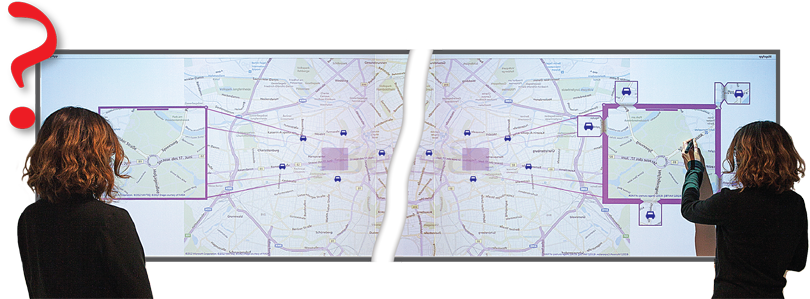
Overview+Detail interfaces can be used to examine the details of complex data while retaining the data’s overall context. Dynamic data introduce challenges for these inter-faces, however, as moving objects may exit the detail view, as well as a person’s field of view if they are working at a large interactive surface. To address this “off-view” prob-lem, we propose a new information visualization technique, called Canyon. This technique attaches a small view of an off-view object, including some surrounding context, to the external boundary of the detail view. The area between the detail view and the region containing the off-view object is virtually “folded” to conserve space. An empirical study was conducted to assess the benefits and limitations of Canyon, in comparison to an established technique, called Wedge. Canyon was found to be more accurate across a number of task conditions, especially in more complex sit-uations, and was comparably efficient to Wedge.
Our Approach

Canyon was designed to provide location awareness of targets, outside of the focal area of a person, on large dis-plays with direct input (see Figure 2 (d)). Targets can be static or dynamic, and they are visualized around the detail view.
The idea of Canyon is to bring off-view objects close to the current workspace by using a paper folding metaphor. Canyon was inspired by Mélange, a technique for fitting multiple focus points into the viewport by folding unused space in between. In contrast, Canyon extends the view by adding cut-out views onto the user’s view.
The design details can be explained using a map exploration context. Consider having a workspace showing a user defined map area and multiple objects, which are outside of the user’s focal range. Canyon extends the view by cutting out a strip of a paper map containing the off-view object and attaches it to the edge of the detail view. Since this strip of map can be long and the space in between is uninteresting, it is sharply folded like paper in order to bring the objects of interest close to the detail view. A paper folding metaphor is easy to understand since humans are familiar with paper manipulation.
To provide distance information, a shadow is added onto the fold. It intensifies the depth illusion and servers as an additional cue for distance awareness.

